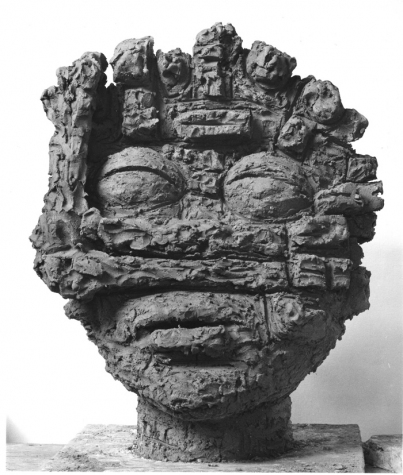Exhibitions
Reuben Kadish's Holocaust Sculpture
Sculpture Garden
Expressionist brutality and raw emotion manifest themselves in the work of Reuben Kadish, a sculptor, draughtsman, painter and printmaker. The son of parents who had immigrated from Kovno in Czarist Russia (now Lithuania), Kadish was brought up in a Yiddish speaking traditional family. Born in Chicago but raised in California, Kadish studied at the Otis Art Institute in Los Angeles together with Philip Guston( Goldstein) . He worked alongside David Alfaro Siqueiros, the left-wing muralist, in Morelia, Mexico, and then became an artist of the Depression era WPA- the Works Public Administration. During WWII, he was assigned to document bombed-out villages in Burma and India; those searing experiences resulted in his creating an impressive series of deeply scored terra cotta and bronze sculptures that viscerally reflected his Abstract Expressionist roots. It was at this point in his life-- the late 1940's-- that his career as a painter virtually ended and he settled down to become a dairy farmer in Northern New Jersey, toiling the land and working as a sculptor. The bronze works in this Sculpture garden reflect Reuben Kadish's ferocious reaction to the horrific world events and crimes against humanity that he personally witnessed during World War II, as well as his fierce response to the Holocaust and Hiroshima.
